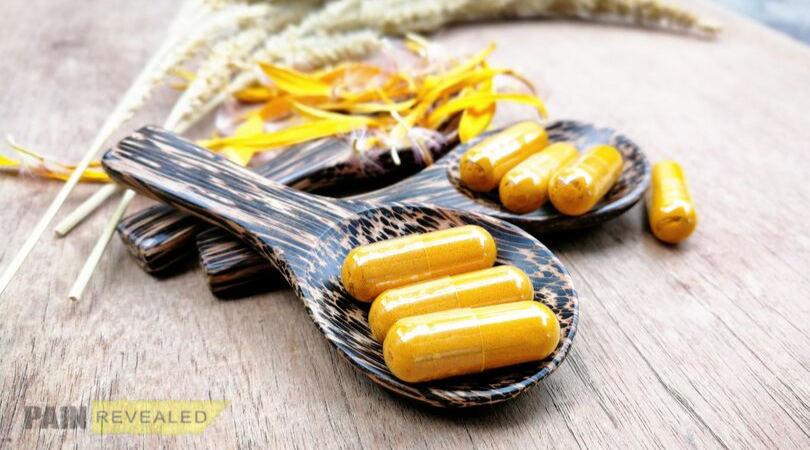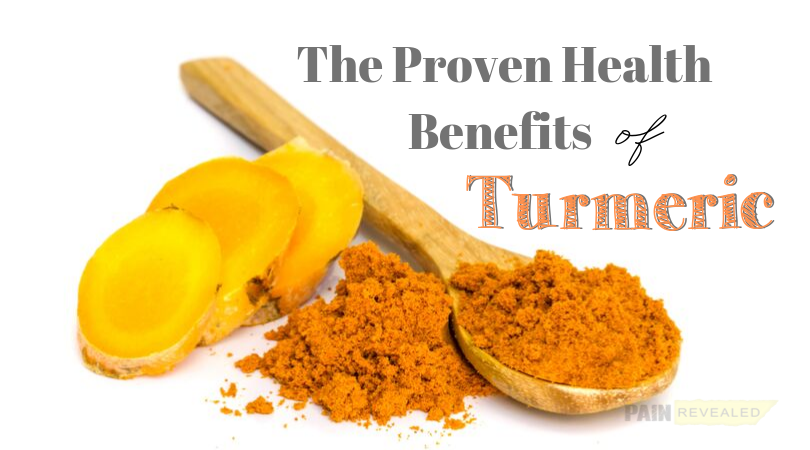You’ve probably heard some buzz about Turmeric. Maybe you’ve even wondered what it is all about. It seems like there is always some kind of new supplement being pushed… how do you know how to choose what is really going to benefit you?
Part of our mission at Pain Revealed is to sift through the hype, dig up the research, and bring resources to you that will truly help you. So is turmeric worth your hard-earned money?
Chances are… it probably is!
The amount of research available to back up the claims made for the benefits of turmeric is astounding. Much of the research was done outside of the United States because turmeric is a traditional medicine of India and Central Asia. The rest of the world is quickly catching up, however!
Turmeric is nothing new, and many people keep a shaker of it in their spice cabinet. It is used in curries, Asian dishes, rice pilaf, and simply to add a lovely golden color to a variety of foods.

But what is the therapeutic benefit? Curcumin, the therapeutic component of turmeric is backed by research for the following uses:
- Anti-inflammatory
- Anti-oxidant
- Improved brain function
- Lower risk of brain diseases like Alzheimer’s
- Lower risk of heart disease
- Cancer prevention and treatment
- Treatment of arthritis
- Treatment of depression
- Fights age-related diseases
What an impressive list!
But wait, you can’t just sprinkle a little turmeric on your meals and expect to get all these wonderful benefits. It turns out that the level of curcumin in culinary turmeric isn’t really enough to cause therapeutic effect.
Additionally, curcumin is not particularly bioavailable, meaning that it does not readily enter the bloodstream.
The solution?
You need a high-quality turmeric extract supplement with a high concentration of curcumin and without fillers or added food coloring. Look for a supplement that contains black pepper, often labeled as piperine, which boosts the bioavailability of curcumin.
It turns out that piperine is a true star—it boosts curcumin absorption by 2000%! Additionally, it is also a potent anti-oxidant.

Because curcumin is fat-soluble, it is recommended to take it with a meal that contains some healthy fats. Having your supplement with a meal will provide the additional benefit of buffering the effects of the piperine—just in case your stomach is sensitive to it. In fact, it may help to start with small doses if you’d like to try turmeric as a supplement for this reason.
What is the recommended dosage?
Makayla Meixner of Healthline writes that in research studies, dosages of 500-2,000mg per day are used. She adds the following recommendations:
- For osteoarthritis: 500 mg of turmeric extract twice daily for 2–3 months.
- For high cholesterol: 700 mg of turmeric extract twice daily for 3 months.
- For itchy skin: 500 mg of turmeric three times daily for 2 months.
Turmeric and its active therapeutic component, curcumin, show amazing potential and promise, and could be just the component needed in your pain arsenal.
Keep up with the latest research and news in the world of overcoming pain on the Pain Revealed Blog. Share this free resource on social media and with your friends!

